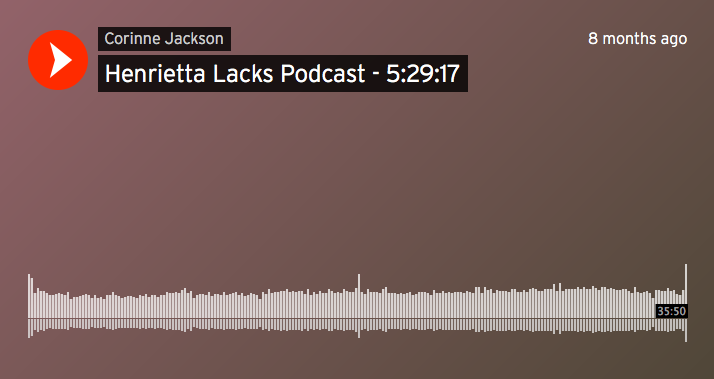The students in my English classes read some of the best in nonfiction literature — Bryan Stevenson’s Just Mercy, Ta-Nehisi Coates’ Between the World and Me and Rebecca Skloot’s The Immortal Life of Henrietta Lacks — and to demonstrate their understanding of these texts, I recently decided to have them make a podcast.
At first, the students were skeptical, even fearful, at the thought of having to plan and produce this kind of work. And who could blame them? We all know how cringeworthy it can be to listen to our own voice. But the end results were inspiring and worthwhile.To listen to one particularly well-done, student produced podcast, click here.
[media-credit id=11284 align="aligncenter" width="640"] [/media-credit]
[/media-credit]
Process
For starters, the students read the book The Immortal Life of Henrietta Lacks. This book tells the story of how an African-American woman becomes an unwitting pioneer for medical breakthroughs when her cells were used without her consent to create the first immortal human cell line in the early 1950s.
After reading the book, I encouraged my students to work in groups and start “low-tech” by using the voice memo apps on their cell phones. Some groups conducted campus-wide polls. Others interviewed fellow students. Still others wrote scripts and then staged reenactments. After recording all of their content, I had them edit their podcasts in class using GarageBand and Audacity. When the editing phase was over, I asked each group to upload their podcast to SoundCloud and then send me the link (consider using a hashtag for searchability). That way, I could easily share the links with their peers as well as any other interested party — colleagues, parents, the community at large.
Skills Demonstrated
Mastery of content: First off, they had to know the content well enough to be able to discuss it at length. I required that they reference a minimum of two passages from their books, which ultimately resulted in a kind of on-air close reading. Their discussions spanned everything from a rhetorical analysis to a conversation about the nuances of the political and social implications of their issue. Bottom line: they couldn’t fake their way through this assignment.
